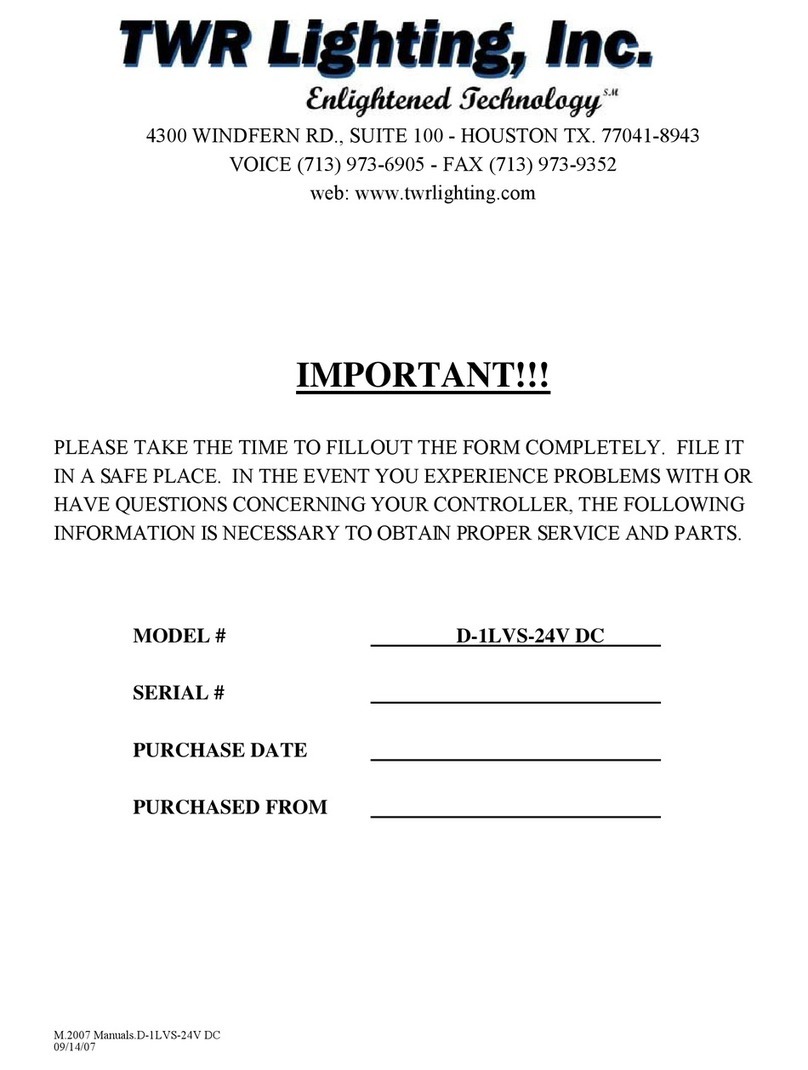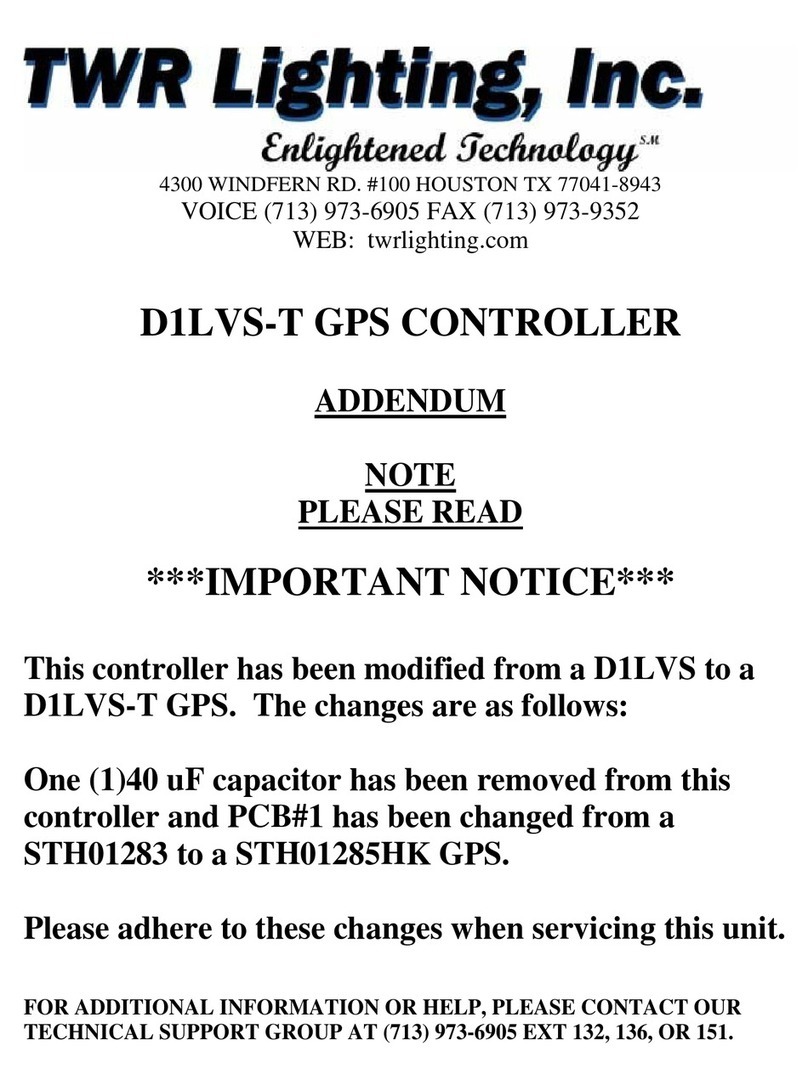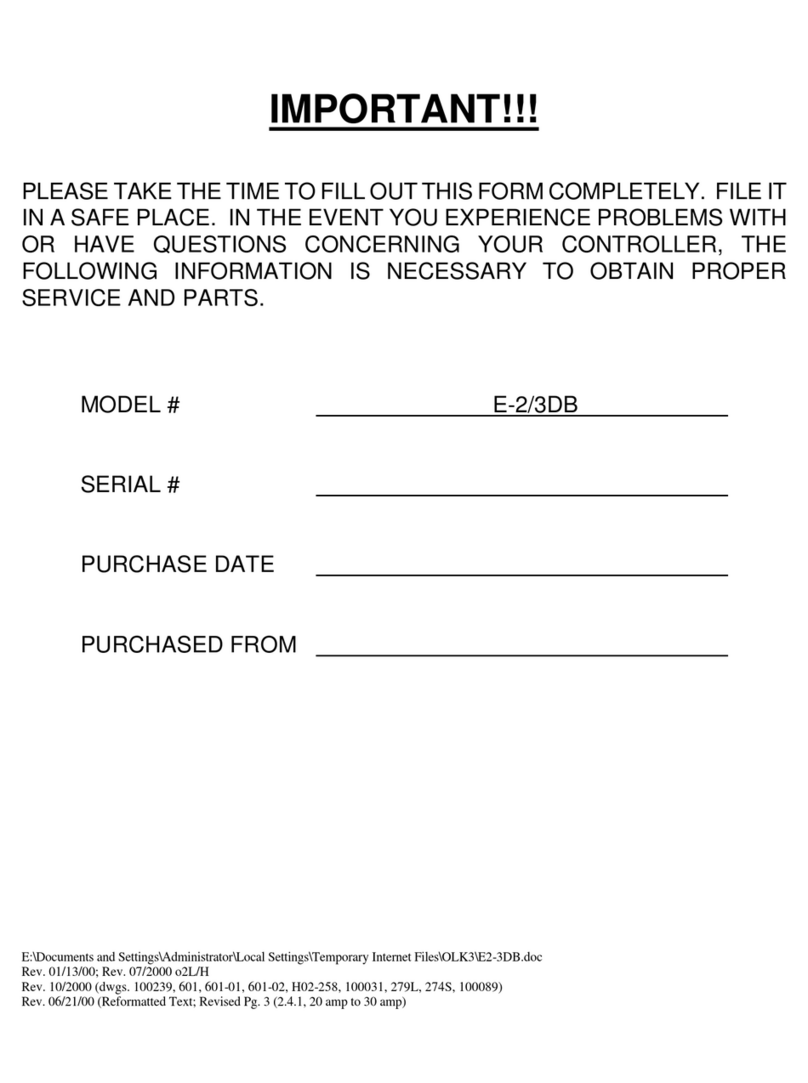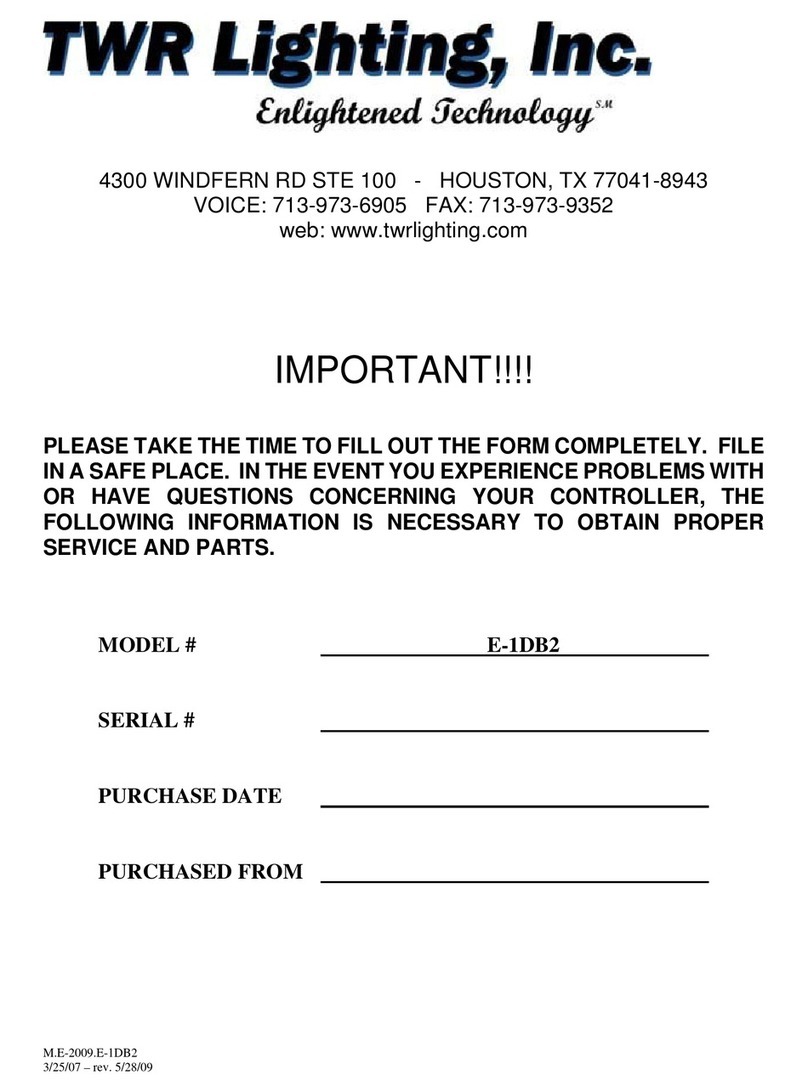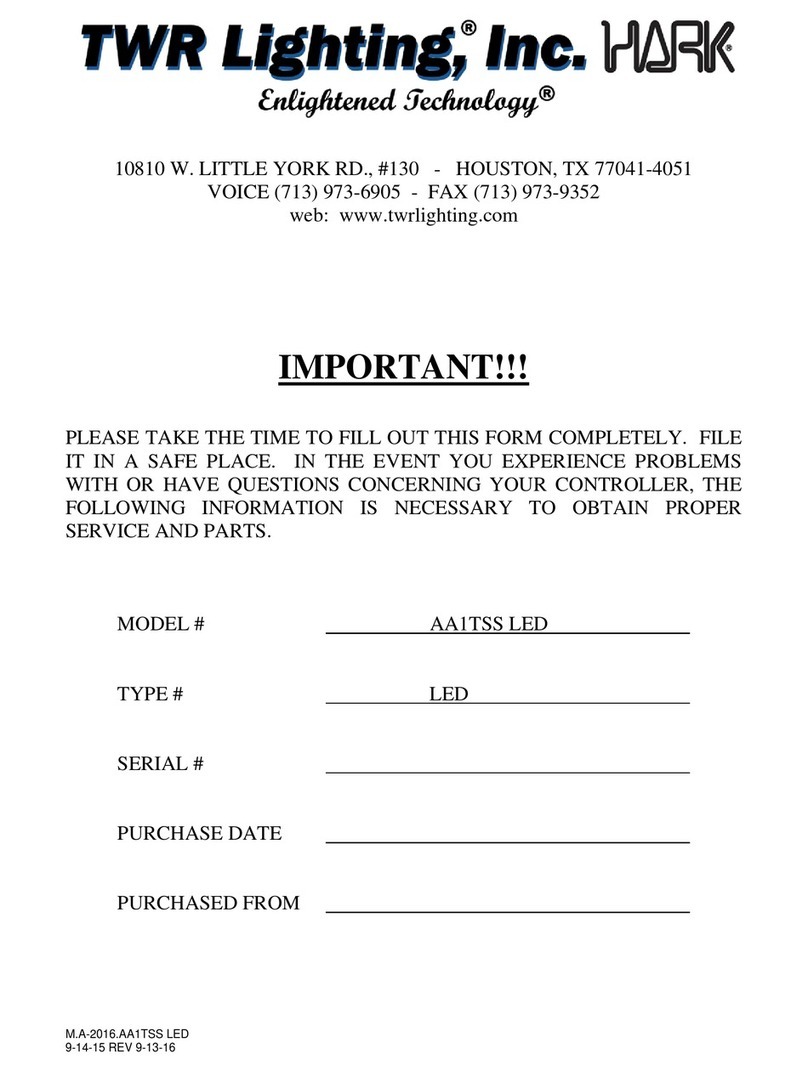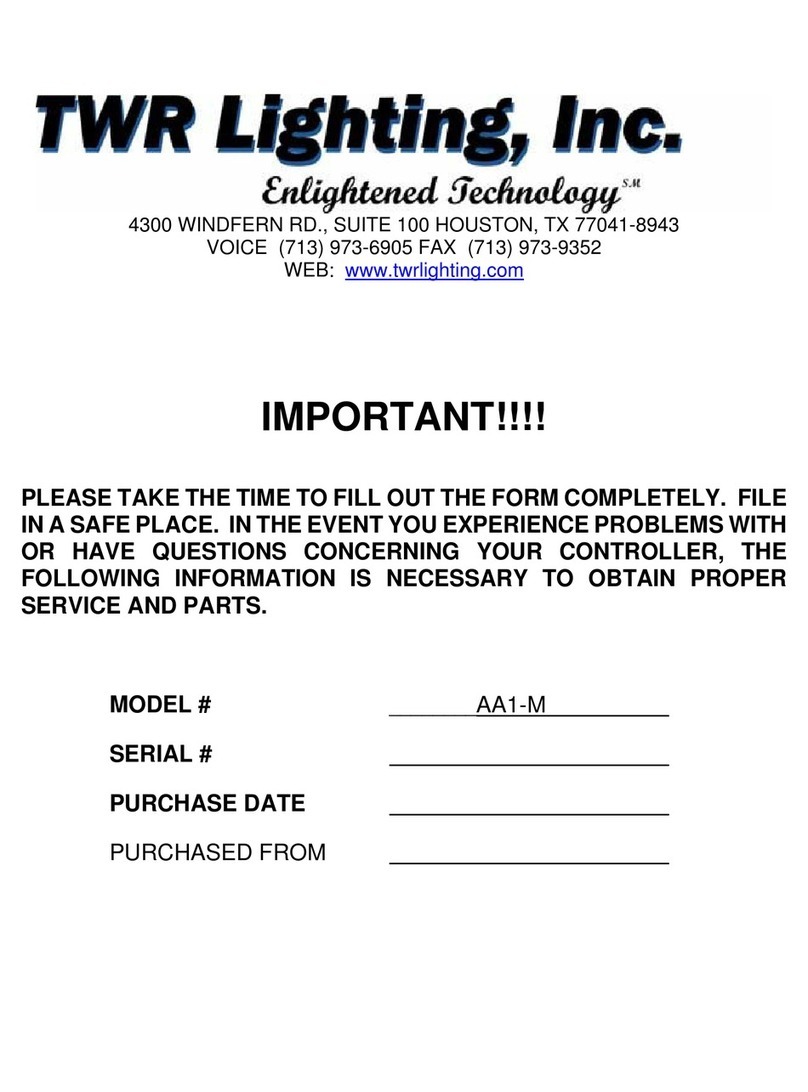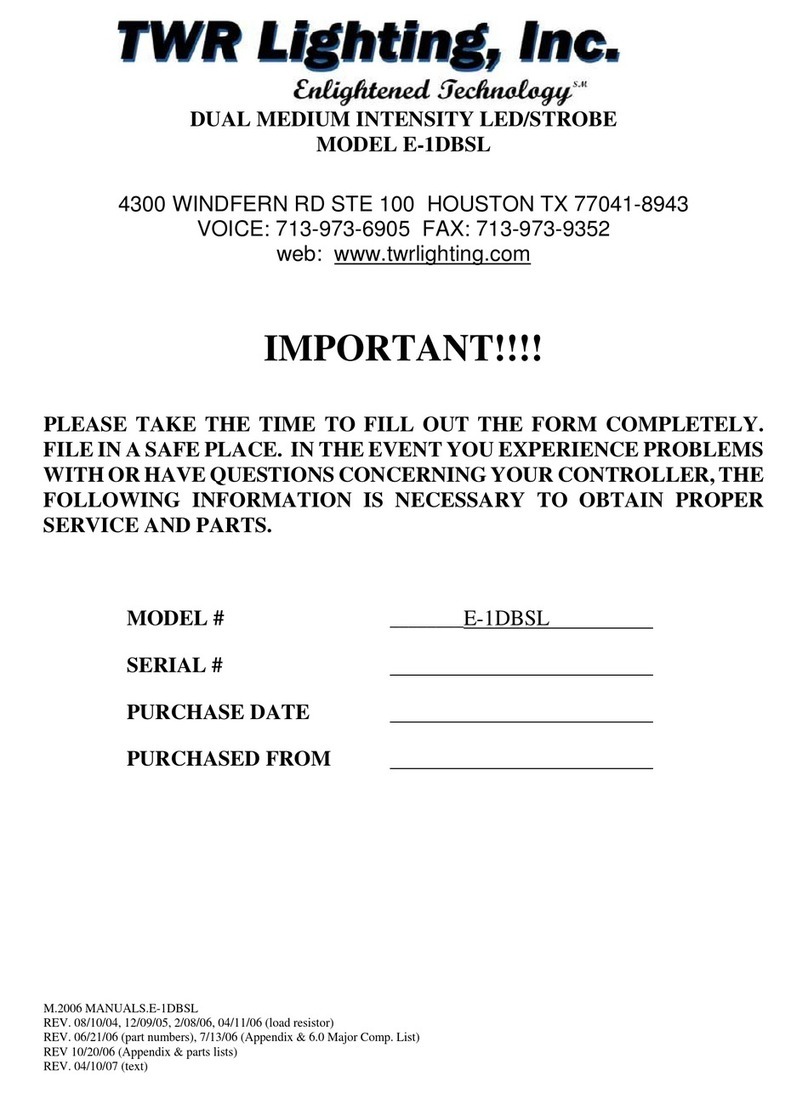
D-1LVS CONTROLLER
M.2016.D.D-1LVS
10-14-08 – REV 6-23-16
TABLE OF CONTENTS
1.0 INTRODUCTION................................................................................................................. 1
1.1 APPLICATION........................................................................................................ 1
1.2 SPECIFICATIONS OF EQUIPMENT ..................................................................... 1
2.0 INSTALLATION.................................................................................................................. 2
2.1 POWER SUPPLY CONTROL CABINET MOUNTING.......................................... 2
2.2 PHOTOCELL HOUSING........................................................................................ 2
2.3 PHOTOCELL WIRING ........................................................................................... 2
2.4 POWER WIRING.................................................................................................... 3
2.5 TOWER LIGHTING KIT.......................................................................................... 3
2.5.1 Beacon Mounting...................................................................................... 3
2.5.2 Lighting Kit Wiring.................................................................................... 4
2.6 ALARM WIRING..................................................................................................... 4
2.6.1 Alarm testing ............................................................................................. 4
2.6.2 Strobe Failure (SF).................................................................................... 4
2.6.3 Power Failure (PF) .................................................................................... 5
2.6.4 Photocell (PC)............................................................................................ 5
2.7 CONTROLLER CONFIGURATION ....................................................................... 5
3.0 THEORY OF OPERATION................................................................................................. 6
3.1 THE POWER SUPPLY........................................................................................... 6
3.2 THE FLASHTUBE .................................................................................................. 6
3.3 TIMING CIRCUIT.................................................................................................... 7
3.4 TRIGGER CIRCUIT................................................................................................ 7
3.5 ALARM CIRCUITS ................................................................................................. 7
3.5.1 Strobe Failure (SF).................................................................................... 7
3.5.2 Photocell (PC)............................................................................................ 8
3.6 BLEEDER CIRCUIT ............................................................................................... 8
3.7 STROBE DIAGNOSTIC CIRCUITS ....................................................................... 8
3.7.1 Control Power On ..................................................................................... 8
3.7.2 High Voltage.............................................................................................. 9
3.7.3 Trigger Voltage.......................................................................................... 9
3.7.4 Nightmode ................................................................................................. 9
3.7.5 Primary Timing.......................................................................................... 9
3.7.6 Timing Signal Verify.................................................................................. 9
3.7.7 Flash Verified........................................................................................... 10
3.7.8 Strobe Fail Test....................................................................................... 10
